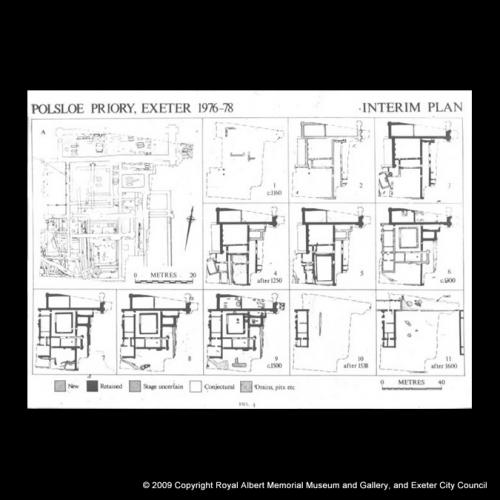The development of the nunnery of Polsloe Priory
Back to Time Period
This series of plans shows the development of the small nunnery at Polsloe between its foundation c.1160 and its dissolution in 1536. The sequence was uncovered by excavation by Exeter Archaeology in 1976-8. The large plan (top left) shows the outlines of all the different medieval features as excavated. The series of smaller plans beside it and at the foot of the illustration unravel the different phases of building represented.
The first buildings were of timber; only portions of these were found. They were soon replaced by plain Norman structures laid out around a square cloister. In the 13th century a series of buildings of timber and stone were added to the south of the cloister, providing additional service rooms for the kitchens and domestic quarters. The main ranges were rebuilt in the early 14th century. The buildings seem to have contracted towards the close of the middle ages in the 15th and 16th centuries, but the last phase of activity is represented by quite rich finds and improvements to the water supply. Only one of the four ranges around the cloister survived the dissolution of the monasteries in the reign of Henry VIII.
Publication: Allan, J.P. 1979 Summary, Medieval Archaeology (23), 250.
Acknowledgments: Exeter Archaeology



















